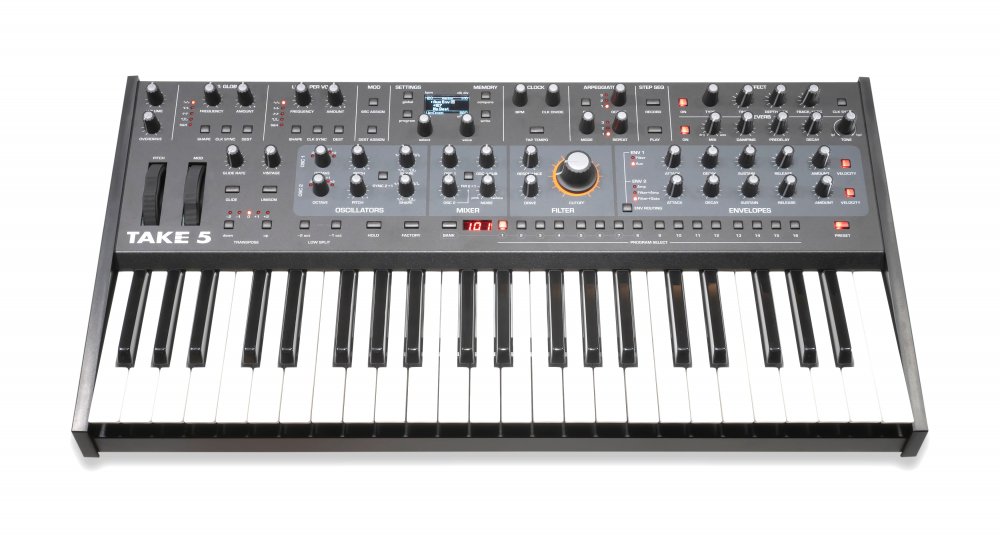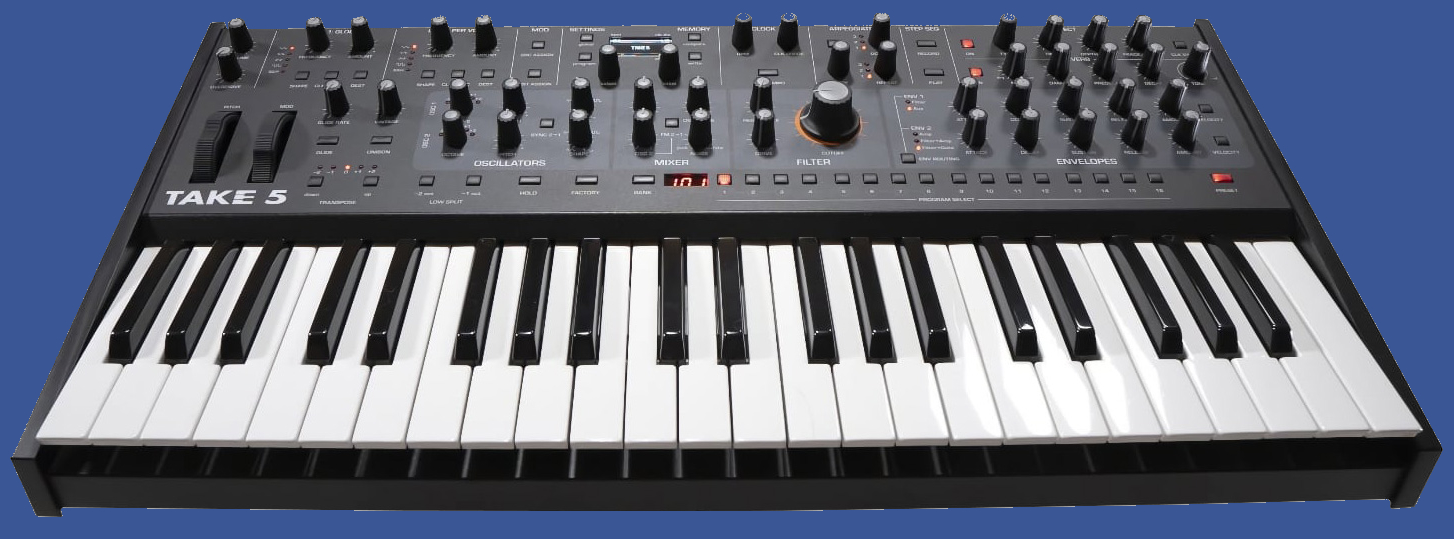

The instrument is certainly made to be portable - it's light, very low profile, measuring 37½ x 12 x 4ins (L x D x H), and yet well constructed from black 'mottled' stove-enamelled finish metal. There's 10-year battery back-up for this memory, provided you turn the instrument on occasionally, and the micro puts the oscillators back in tune at the touch of a button.

The original analogue EGs and LFO are also micro functions and the digital memory stores ALL the switch and knob settings for all of the hundred sound programs, as well as the dual Sequencer notes. The micro computer does in fact solve the problem of generating six independent sets of voice control voltages and gate signals. Prophet synthesisers are often termed 'digital-analogue hybrids' because many of the analogue style controls create digital data for the built-in micro system, which in turn programs the voices. E&MM will be presenting detailed discussion of the MIDI shortly. Gone are the control voltage and trigger ins and outs in favour of this micro controller - a bold first step towards what is likely to become the universal link for the synthesiser. Only the Prophet-10 has a 'drone' hold function, although the '5' has a 'release' footswitch socket.īut the biggest innovation must surely be in the provision of MIDI (Musical Instrument Digital Interface). The filter remains the same, but the LED indicators are restricted to the touch program section. The Poly-Mod section does not control oscillator pulse width and there's no protection switch for the sound programs, but the keyboard range is the same 5-octaves (C to C). Pitchbend range is less, but there's polyphonic portamento (no Prophets have glissando). There's no variable scale mode or A-440 tuning - the latter may well be an important omission. Keyboard tracking for the filter has two modes instead of one. You can't make the second oscillator run as an extra LFO or independently from the keyboard, but the first oscillator gains a triangle waveshape.

The LFO only has triangle and square modulation (no sawtooth) but adds programmable LFO depth - a great bonus. The noise source has gone, which will put off some people. There's no facility for 'defeating' voices but this is no longer necessary with the new circuitry and extensive digital control. One hundred sound programs can be stored, edited and saved on cassette - the 5 can hold 120 but only save 40 at a time. The Prophet-600 contains six individual 'voice' synthesisers, with dual VCOs, VCFs and VCAs with independent ADSRs, instead of five. Making some quick comparisons reveals that you are really getting something special for your money, not just a watered-down version of the P-5.

A polysequencer, remote keyboard, and Pro-FX system complete the company's main product line at present ( more details of SCI products are in the E&MM January '83 issue), and while the interest in the forthcoming Prophet t8 is no doubt strong, the Prophet-600 has suddenly appeared as the low cost alternative to the Prophet-5. These two synthesisers, along with the popular monophonic Pro-One, have established SCI as an important contributor to the synthesiser world. The Prophet-5 has been tremendously successful and since then SCI have manufactured another polyphonic machine, the Prophet 10, with 10 voices and dual keyboards. Early in 1978, Sequential Circuits Inc (SCI) introduced the Prophet-5 polyphonic synthesiser which was one of the first programmable instruments to emerge, benefitting from the new micro technology of the time.


 0 kommentar(er)
0 kommentar(er)
